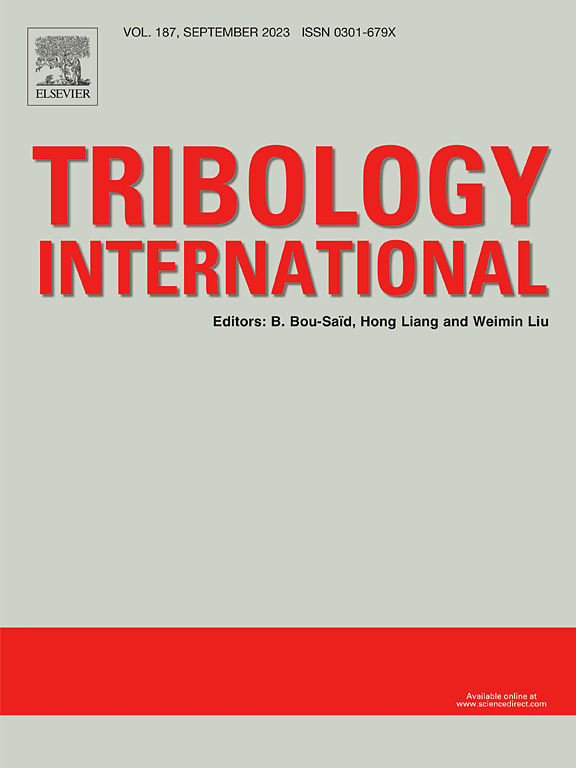Effects of annealing temperature on the microstructure, mechanical properties, and tribological performance of the Mn8/SS400 bimetal composite
IF 6.1
1区 工程技术
Q1 ENGINEERING, MECHANICAL
引用次数: 0
Abstract
This study investigates the effects of annealing temperatures on the microstructure, mechanical properties, and tribological performance of Mn8/SS400 bimetal composite (BC) produced via hot-rolled bonding. Results show that annealing led to a microstructural transition in the Mn8 layer from a fully austenitic structure to a multiphase structure containing pearlite, ferrite, bainite, and retained austenite. The SS400 layer transformed from the bainitic ferrite (BF) and martensite/retained austenite (M/RA) to a more stable bainitic structure. Annealing at 600 °C resulted in optimal mechanical properties, with ultimate tensile strength (UTS) reaching 755.7 MPa and the best wear resistance. This enhancement is attributed to the synergistic strengthening provided by the multiphase microstructure and interfacial element diffusion across the interface. Higher annealing temperatures (700–800 °C) promoted the formation of intermetallic compounds (IMCs), reducing the interfacial diffusion layer width and consequently influencing wear behaviour. The study highlights that the multiphase strengthening and interfacial bonding between the Mn8 and SS400 layers are key to achieving superior mechanical and tribological performance, with the 600 °C annealed sample exhibiting the best overall properties.
求助全文
约1分钟内获得全文
求助全文
来源期刊

Tribology International
工程技术-工程:机械
CiteScore
10.10
自引率
16.10%
发文量
627
审稿时长
35 days
期刊介绍:
Tribology is the science of rubbing surfaces and contributes to every facet of our everyday life, from live cell friction to engine lubrication and seismology. As such tribology is truly multidisciplinary and this extraordinary breadth of scientific interest is reflected in the scope of Tribology International.
Tribology International seeks to publish original research papers of the highest scientific quality to provide an archival resource for scientists from all backgrounds. Written contributions are invited reporting experimental and modelling studies both in established areas of tribology and emerging fields. Scientific topics include the physics or chemistry of tribo-surfaces, bio-tribology, surface engineering and materials, contact mechanics, nano-tribology, lubricants and hydrodynamic lubrication.
 求助内容:
求助内容: 应助结果提醒方式:
应助结果提醒方式:


